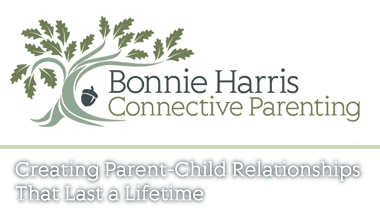 Communication is the core of the parent/child relationship. Communication makes or breaks connection. It’s not so much what we say but how we say it that conveys meaning to our children. We may intend to teach a lesson or get a point across but our tone of voice and body language determine whether our child hears what we intend or an entirely different message.
Communication is the core of the parent/child relationship. Communication makes or breaks connection. It’s not so much what we say but how we say it that conveys meaning to our children. We may intend to teach a lesson or get a point across but our tone of voice and body language determine whether our child hears what we intend or an entirely different message.
“What is it you want?” can be said with genuine curiosity and encouragement or with criticism and judgment. One reading tells the child, What you want is important to me. A different reading says, You are an annoyance and an inconvenience. Leave me alone.
Good communication requires knowing when to ask questions and when to make statements. There are times for each. Usually we pick exactly the wrong time.
Imagine your child is clearly upset, which may show up directly in her emotions or in acting out behavior. This is the time when we want to know what is going on and so we typically ask:
- What’s wrong?
- Why are you so angry?
- Why did you hit your sister?
Or we cannot avoid the temptation to get our teaching in there:
- When are you going to learn to just walk away?
- Why do you keep provoking her?
Sometimes we project our own experience and make assumptions with leading questions:
- Didn’t that make you feel like you were all alone?
- You thought you were being pushed out, didn’t you?
When we want our children to express their emotions, we are tempted to ask questions—the last thing kids want to hear. Questions at this stage can block communication rather than open it, especially when children are not sure how their answers will be received.
Questions feel like a setup to a child leaving him thinking,
- Mom doesn’t want to know how I feel, she just wants me to do what she wants.
- Do I answer what I think she wants to hear or what I know she doesn’t?
- What’s Dad after? Will I get in trouble if I tell the truth?
Instead of blocking communication, we need to build bridges that invite our children to tell us what’s going on—if they know. In order to do that, they need to trust that we are not leading them in the direction that suits our agenda, trust that we can hear something tough and not tell them what to do about it, trust that we will not be dismissive. We teach them to distrust with the following questions:
- You can’t talk to him like that. Don’t you know what that will lead to?
- Your friend hit you and pushed you down? Oh my darling, are you alright? I’m getting on the phone with his mother right now.
- Oh come on, you don’t really feel upset about a silly thing like that, do you?
- You do, too, get what you want. Just yesterday we went to the park, remember?
Building bridges for opening up emotionally means statements of understanding and validation. Think period at the end rather than question mark.
- It looks like you’re feeling really upset about something. I’d like to know what that’s about.
- I bet if I were you, I’d feel pretty confused about what she said.
- I wonder if you’re feeling left out. I can imagine that would hurt.
- Or simply listen attentively.
If your child feels your genuine concern, your statement is likely to prompt his response and more conversation will follow. If your child doesn’t like to talk or isn’t ready, there is no pressure since you haven’t asked a question. Your statement lets him know that you care.
After connection is made and your child feels understood, it’s time for problem solving. This is the stage when we are most tempted to make statements and tell our children what to do or fix the problem for them.
- You need to tell her to stop calling you names.
- Just walk away and leave him alone.
- Stand up for yourself and give him a good punch in the nose.
- If you want to get on the team, I’ll talk to the coach. He owes me one.
- Don’t let anyone talk to you like that. I’m calling your teacher.
Instead, it’s best to lead their thought process and guide them toward finding their own solutions.
- What is it you want him to do?
- What do you think he needs from you in order to do that?
- How do you think doing that would work? Would that get you what you want?
If your child is stuck, ask if he’d like your help, but be sure to respect that your solution might not be right for your child.
- Do you want my opinion?
- When something like that happens to me, I feel better when I say something about it/apologize.
We love to tell our kids what they should do. But when we do, we project ourselves into their experience based on what we would do in their shoes. Not only are we adults with our life experience (usually our justification for directing them), but we are different people. Our children need to know how to solve their problems in ways that work for them, learning through trial and error, so when we’re not in the picture, they can approach a problem feeling strong and confident.
Is there a better life lesson?








This is extremely helpful. For me sometimes I think the biggest obstacle to communicating with my child in ways that are connective is the sense I have of always being in a rush to get the next thing done and the next and the next…(e.g., eat dinner, wash up, get ready for bed, etc.) It’s so much faster to go straight into asking questions and giving directives so that whatever’s happening can be resolved and out of the way so that we can get on with the list of things that need to get done. This blog reminds me that I really need to make the time to breathe and think before I speak.
Hi Shelley – Yes, breathe and think and just practice staying in the moment. When your thoughts go to what comes next, remind yourself (when you can), to just stay right here and right now with your son.